Art Nouveau & Art Deco
Art Nouveau
The Art Nouveau style blossomed around the world after the spectacular Paris exhibition of decorative arts in 1900. The sensuous flowing lines and elegant forms were derived from nature - notably birds, flowers, trees and insects. Sinuous linear patterns were created in relief with slip-trailing techniques perfected by the Royal Doulton, Minton, and Moorcroft Potteries. Butterflies and peacocks with iridescent colors were particularly popular. In Europe, shimmering luster glazes on art nouveau sculptures were the specialty of Zsolnay of Hungary while Goldscheider of Austria produced patinated bronzed glaze effects for their monumental terracotta statues of women in flowing drapery.
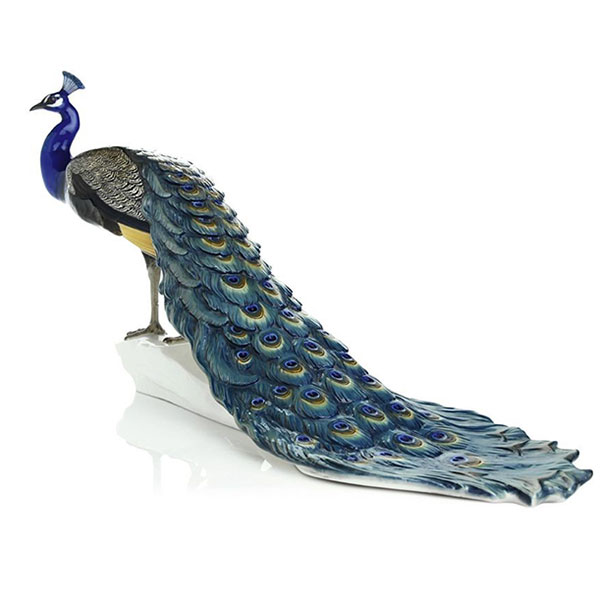
Nymphenburg Peacock by T. Karner c.1910

Julius Dressler Swan Jardinière & Stand c.1900
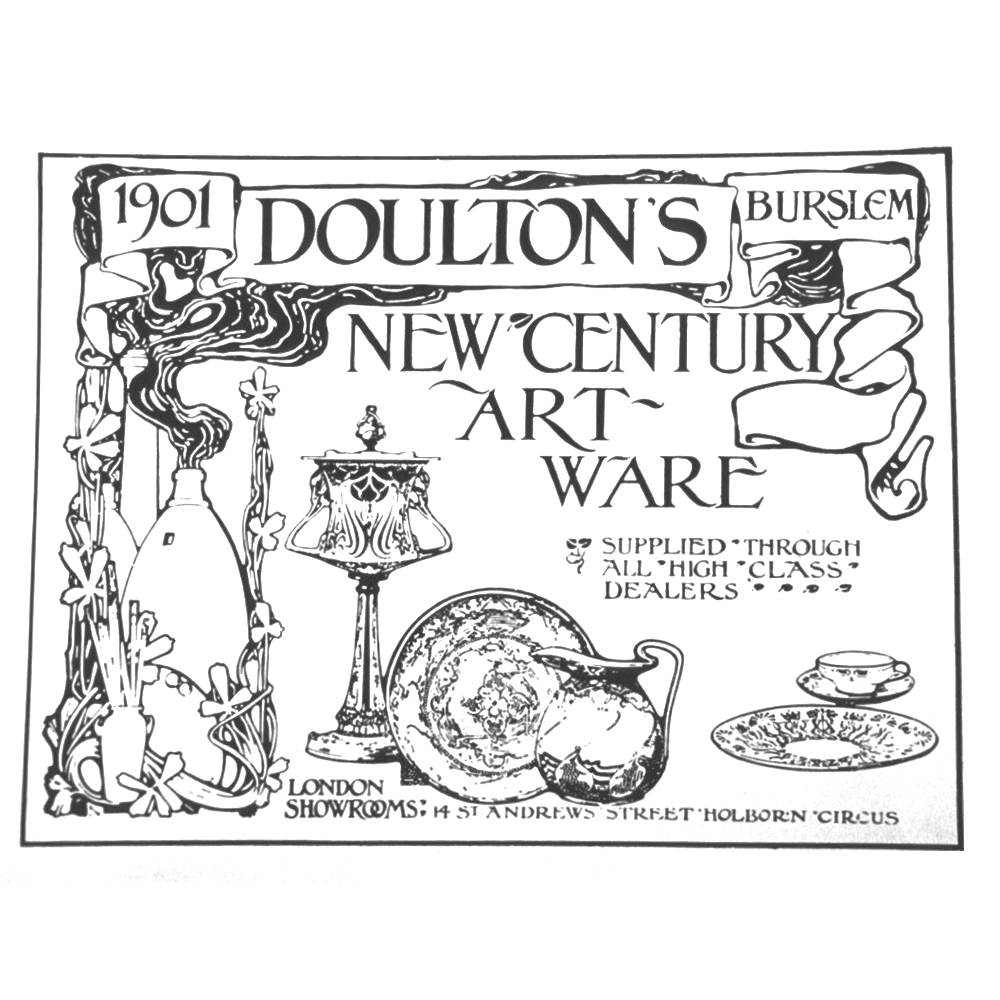
Royal Doulton New Century Art Ware 1900
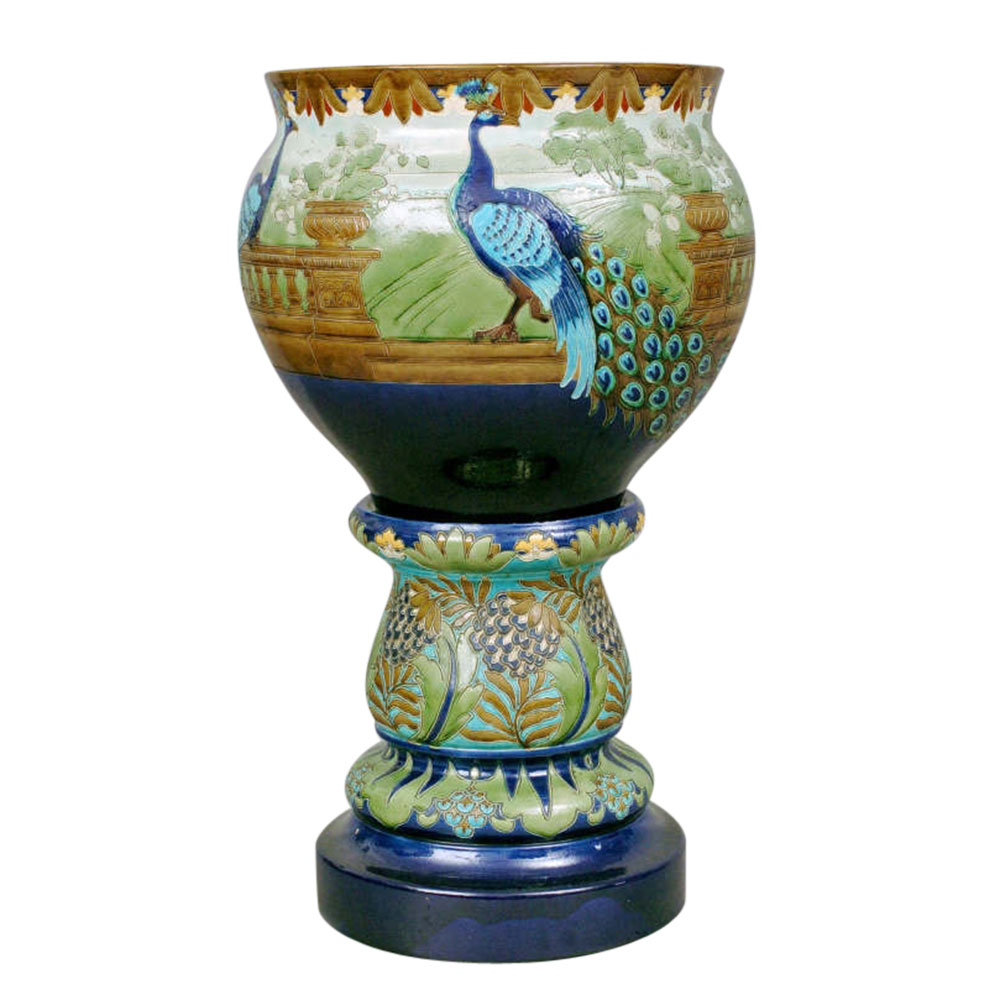
Burmantoft Peacock Jardinière & Stand c.1910
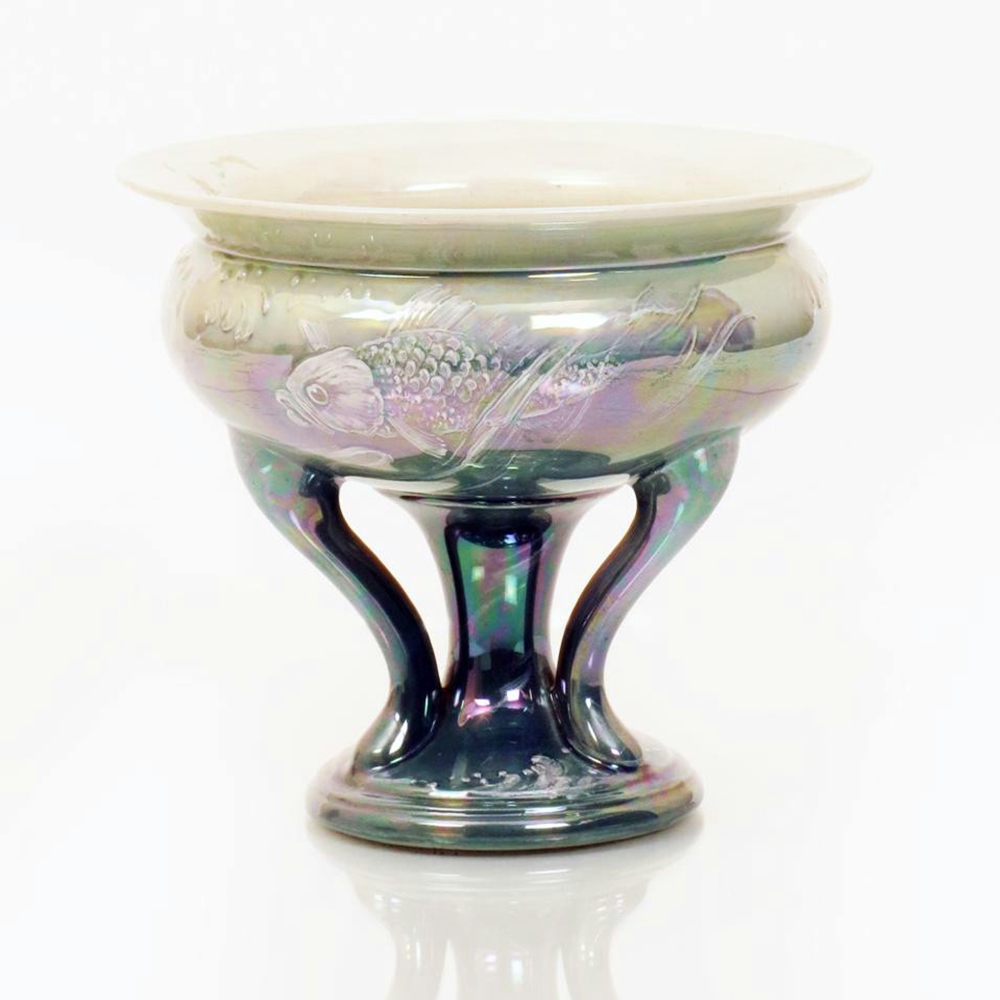
Shelley Luster Fish Pedestal Bowl
by W. Slater c.1920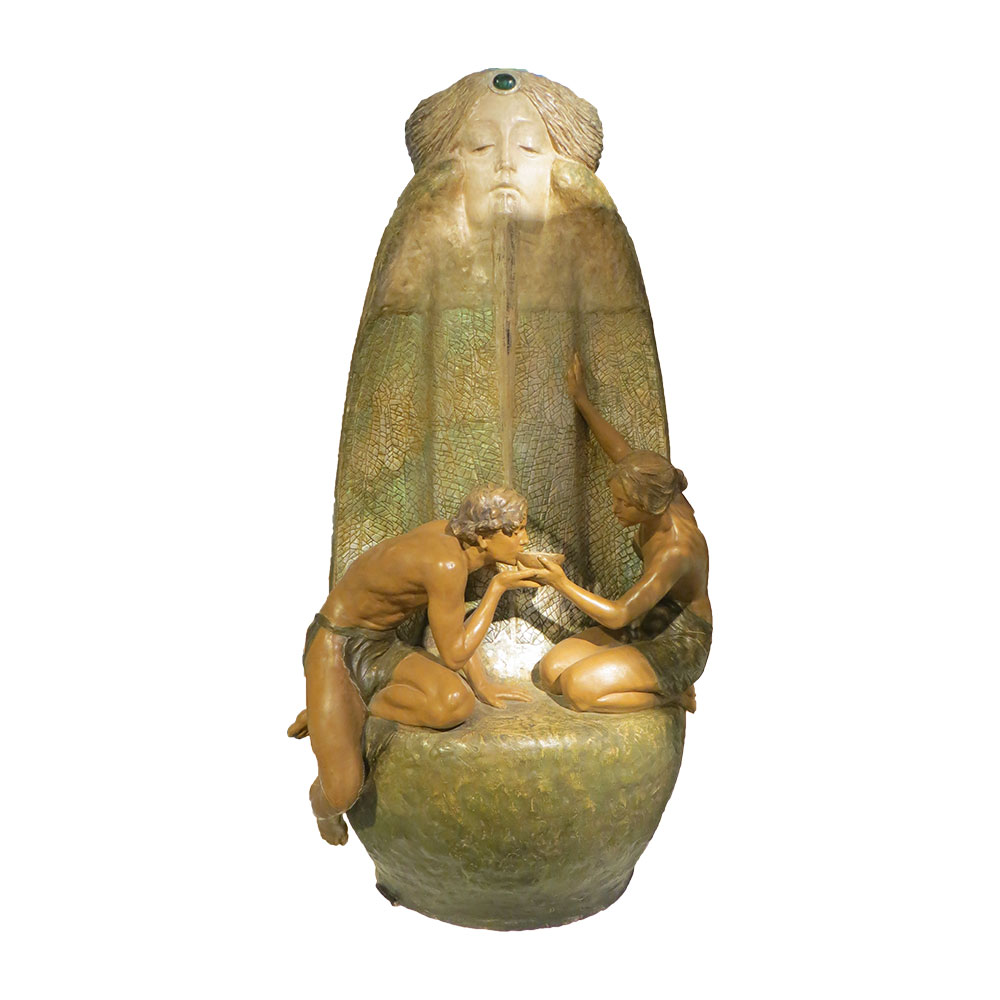
Goldscheider Adam & Eve S. Czapek c.1900
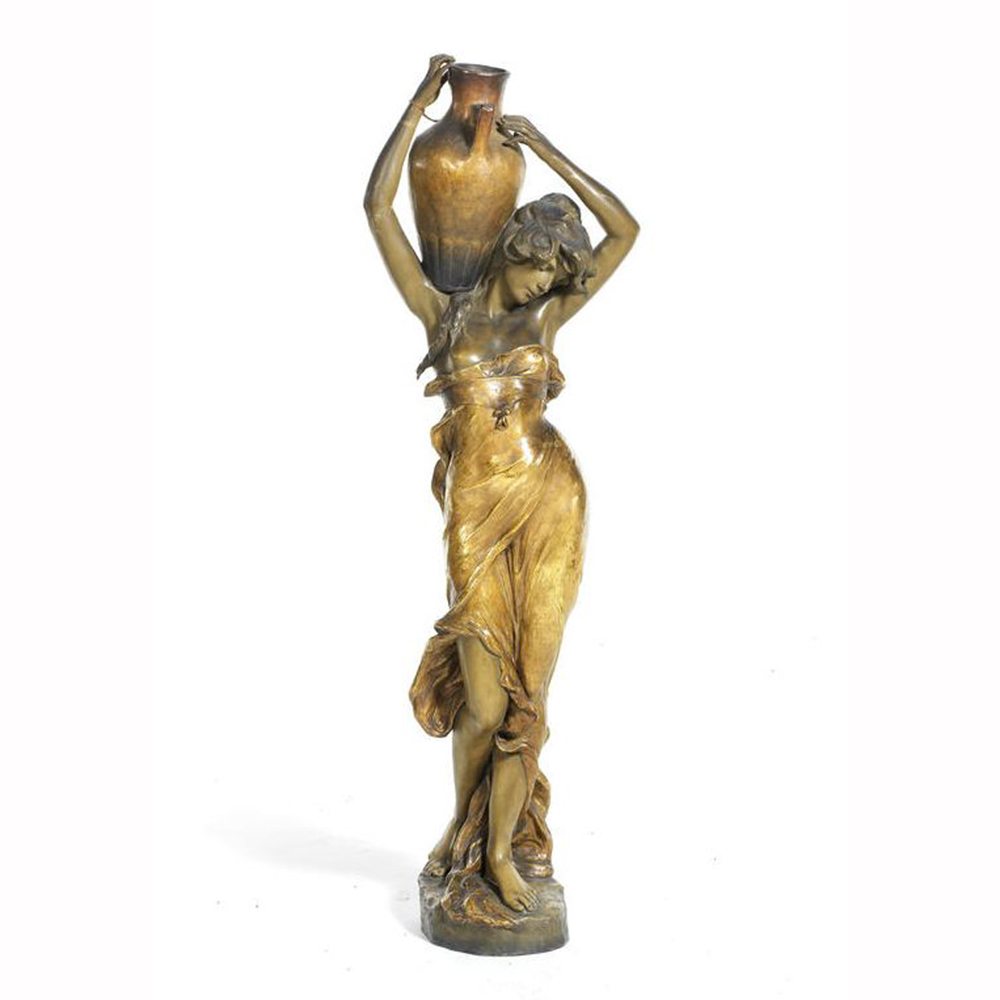
Goldscheider Water Carrier by B. Haniroff c.1900
The Jazz Age
A new design style emerged in the 1920s, which became known as Art Deco after the Paris exhibition of 1925. In contrast to naturalistic curves, Art Deco featured abstract decoration and geometric shapes inspired by machines and man-made objects. British designer, Clarice Cliff introduced her Bizarre Ware at the Wilkinson factory in 1927 and it became hugely popular with the British public after the trauma of the Great War. War-weary Europeans cried out for vivid colors and amusing designs to enliven their drab surroundings. The fashions of the Jazz Age inspired porcelain figurines by Royal Doulton, Goldscheider, Lenci and other European factories. The 1930s was the “Golden Age of Hollywood” with motion pictures featuring iconic film stars whose sensual pin-up photos presented a new concept of glamour.
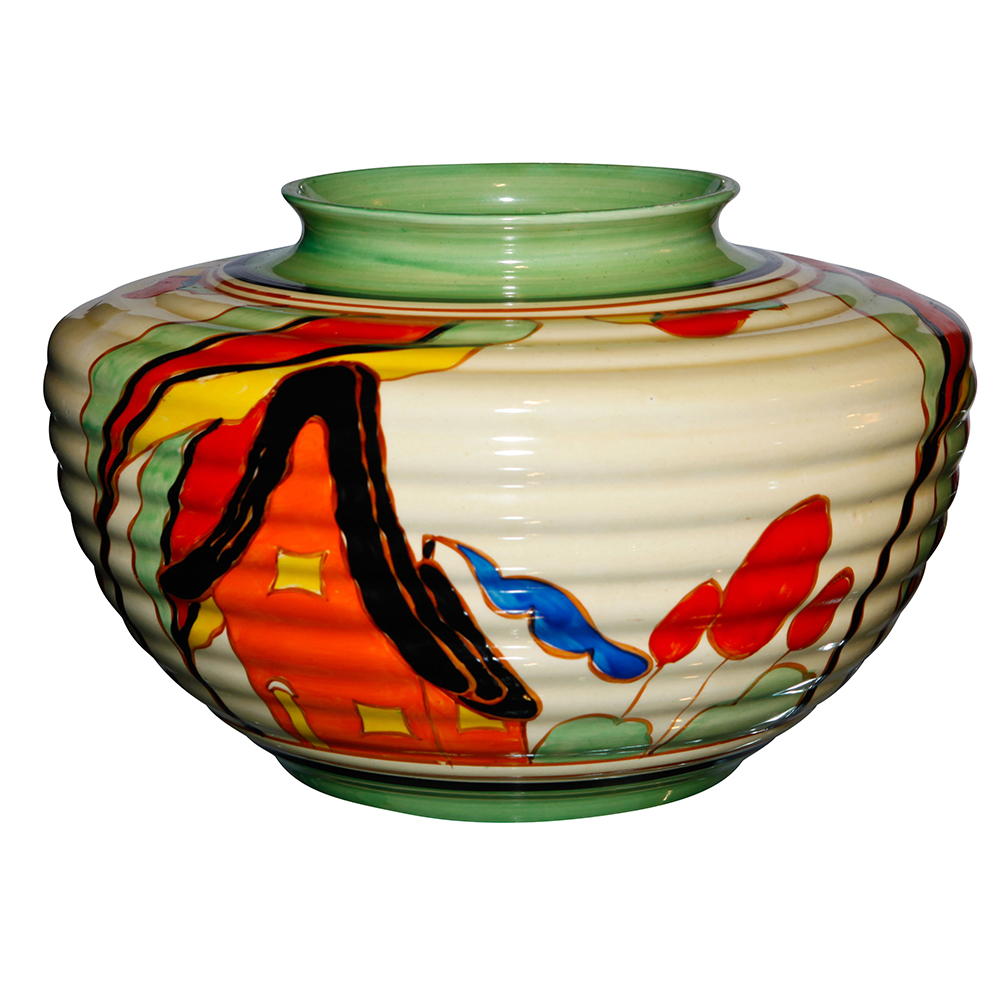
Bizarre Vase by Clarice Cliff c.1930

Bizarre Jug by Clarice Cliff c.1930
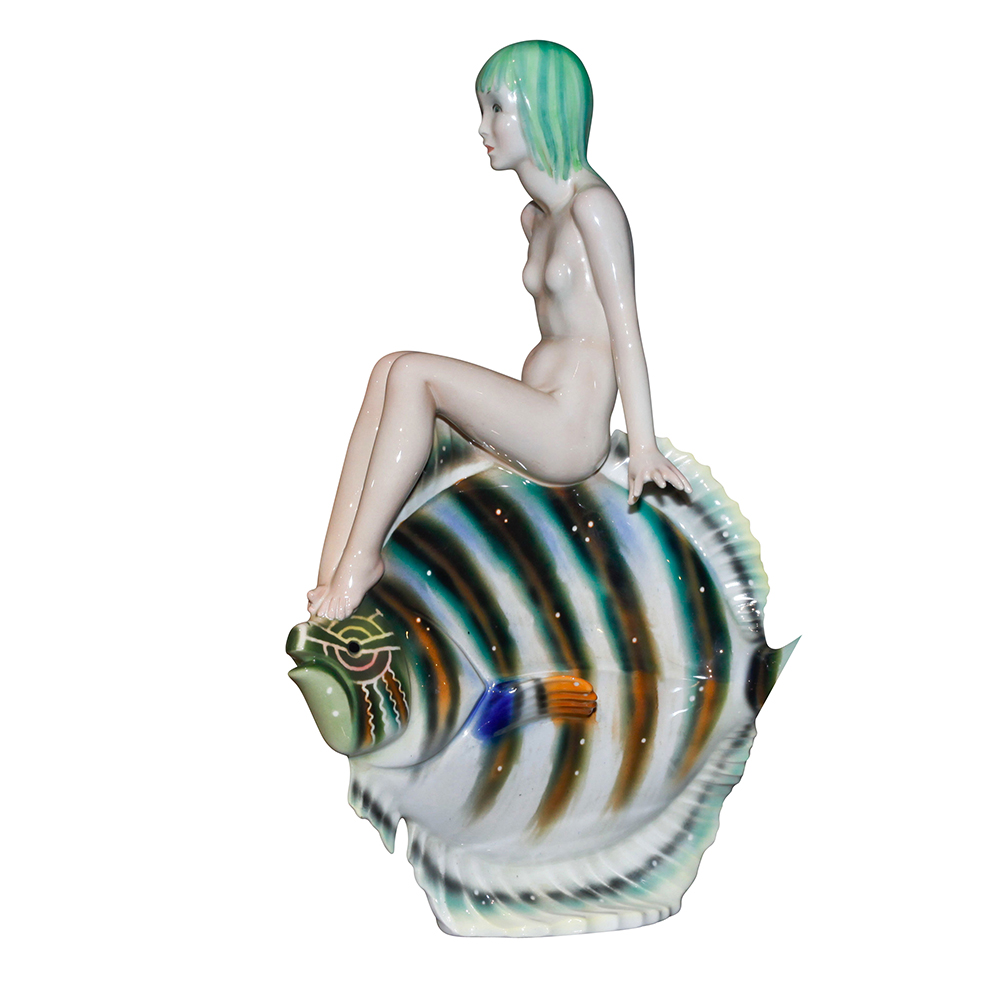
Lenci Fish Rider by H. Scavini c.1930
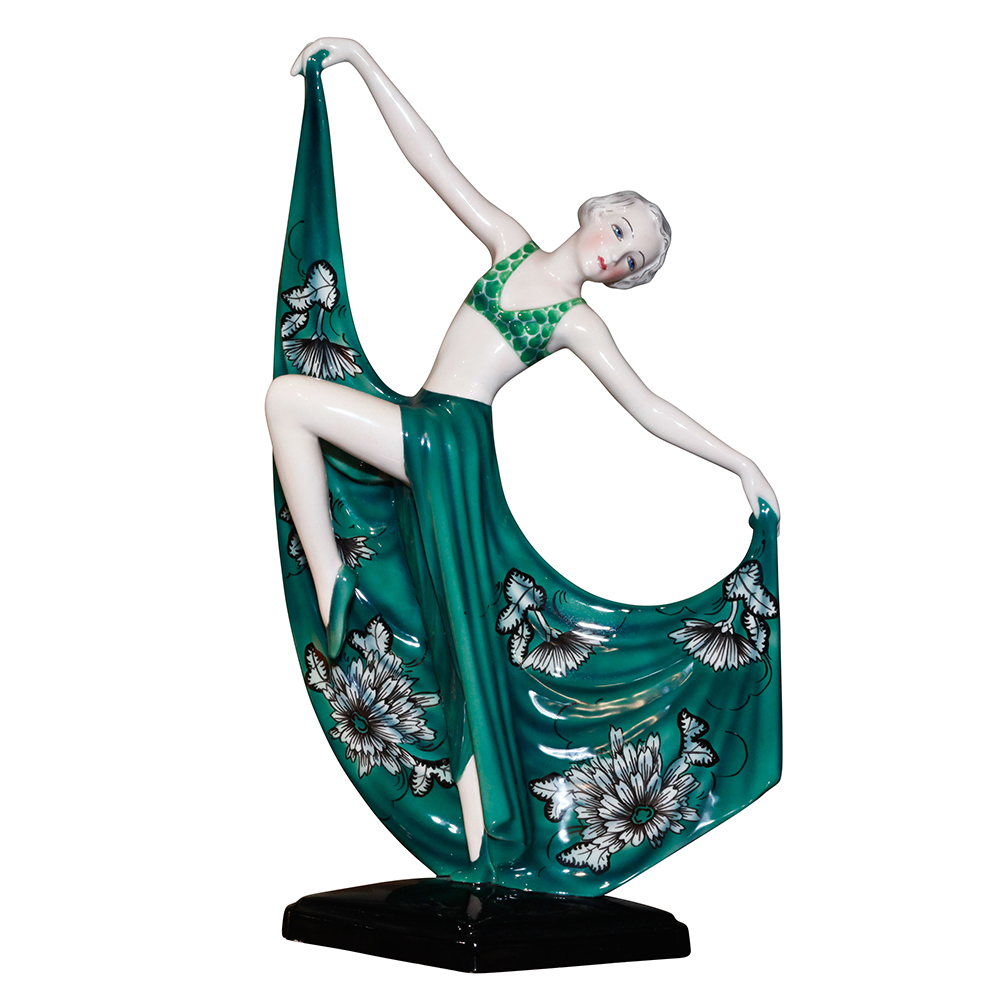
Goldscheider Dancer by J. Lorenzl c.1927

Goldscheider Dancer by J. Lorenzl c.1927
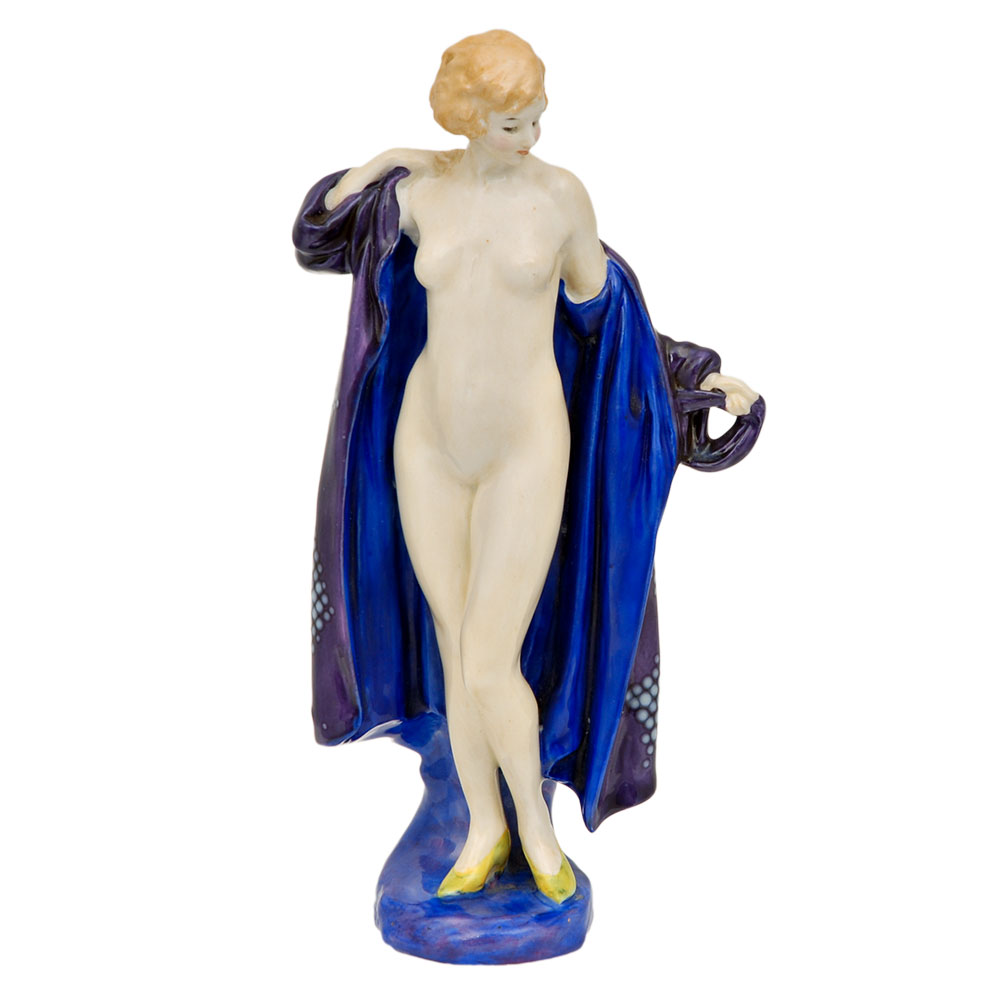
Royal Doulton Bather
by L. Harradine 1924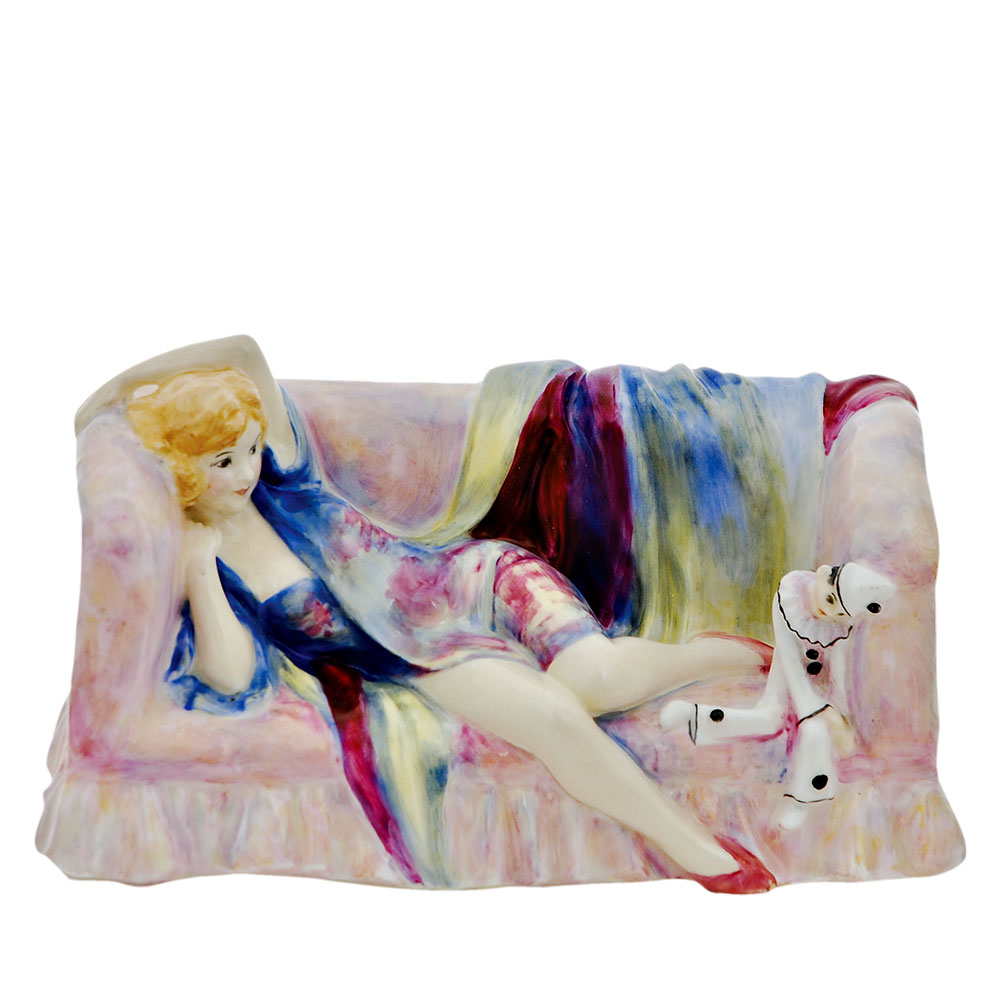
Royal Doulton Dreamland
by L. Harradine 1931
Art Moderne
Art Deco sculptors produced sleek, stylized models of humans and animals which were decorated in new glazes in shades of celadon green and moonstone. Richard Garbe reinterpreted his sculptures in ivory and bronze for ceramic figures produced by Royal Doulton and John Skeaping designed a series of stylized pottery animals for the Wedgwood factory. In the USA, Art Deco skyscrapers, such as the Chrysler and Empire State buildings, vied for dominance of the New York skyline. A new style of streamlined architecture, stripped of ornament, emerged during the Great Depression of the 1930s, reflecting more austere economic times. Art Moderne introduced aerodynamic curves and nautical influences from the great transatlantic ocean liners. Ocean Drive in Miami Beach boasts some of the best surviving examples of Art Deco and Art Moderne architecture in the world.
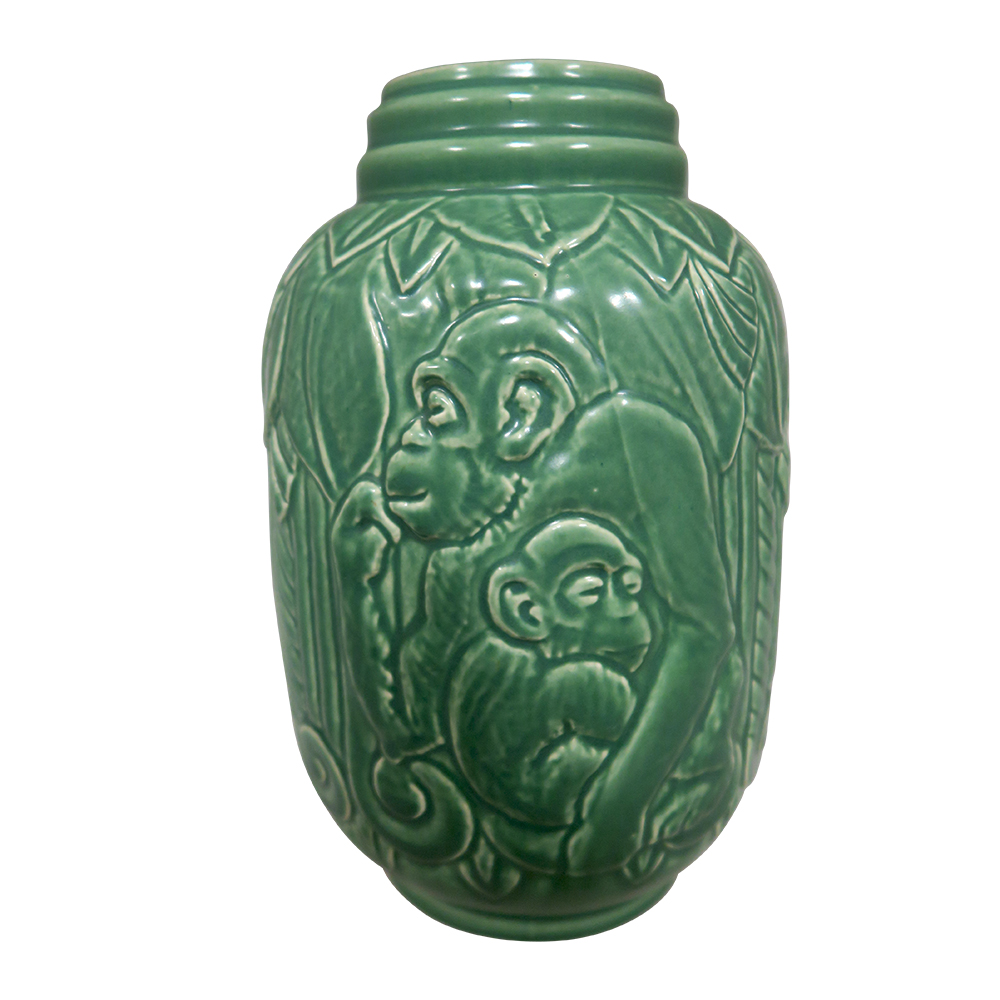
Wedgwood Monkey Vase by E. Olsen c.1932
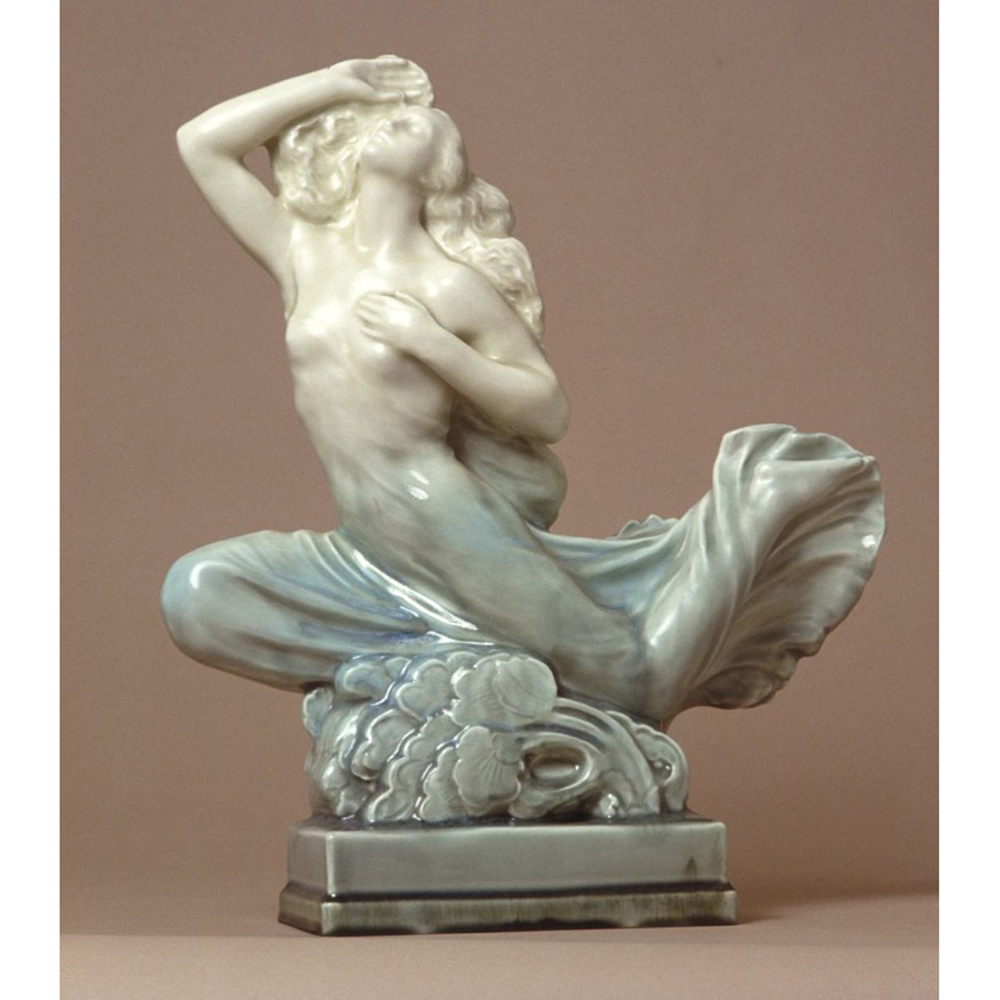
Royal Doulton Spirit of the Wind
by R. Garbe 1933
Royal Doulton West Wind by R. Garbe 1938
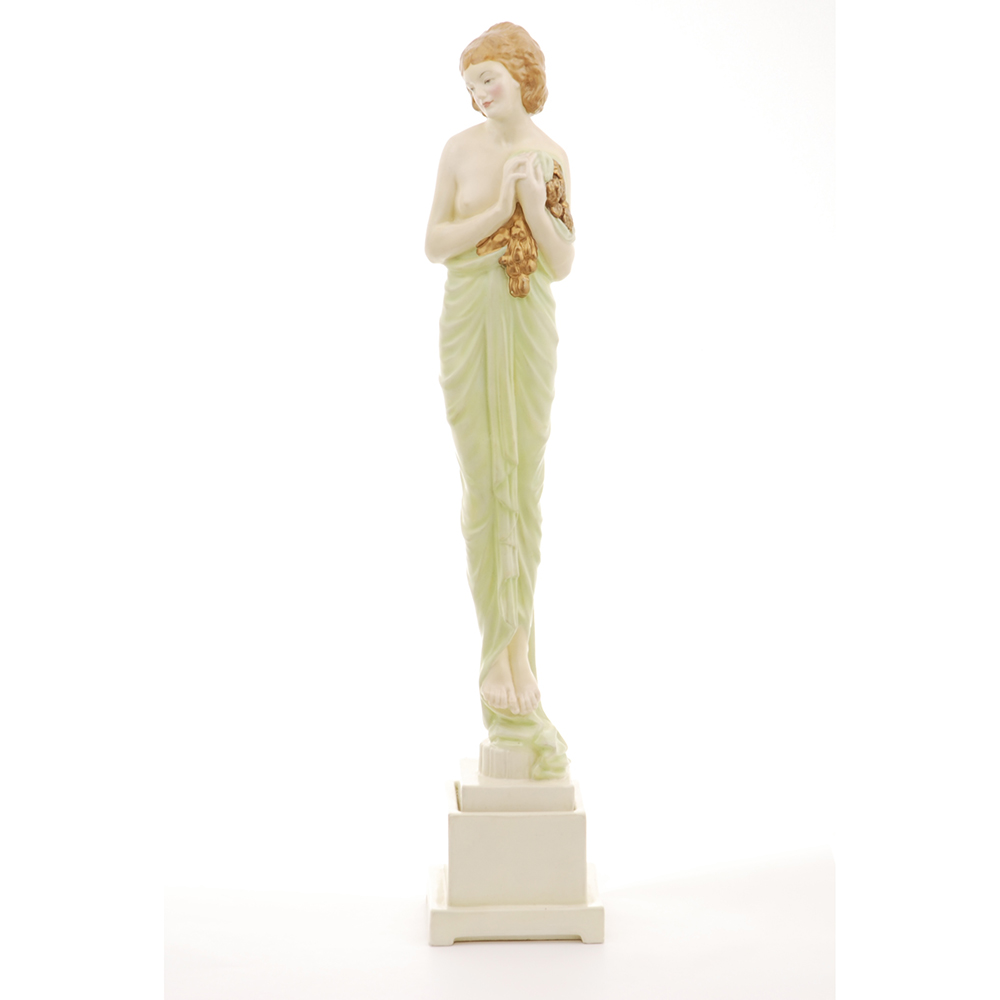
Royal Doulton Spring by R. Garbe 1933

Doulton House 1939

Wedgwood Polar Bear
by J. Skeaping 1927
